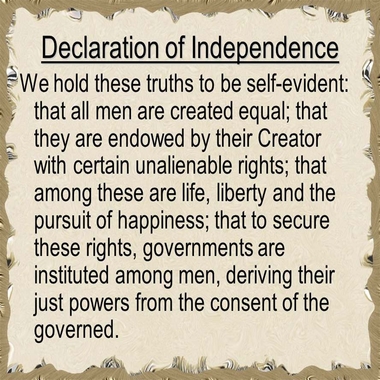The roller coaster ride for LGBTQ rights

by Mary Turner
HIV/AIDS Medical Columnist
The Preamble to the Declaration of Independence. On the surface, the words of our forefathers as they declared themselves independent of the tyranny of British rule seem to indicate that citizens of the United States are free to be whoever they are regardless of race, religion, color, sex, gender identity, and so forth.
Unfortunately, the people entrusted to define and enforce these protections are typically affluent white males who are not keen on sharing these rights with those different from them. Over the years, many groups of people have fought long and hard to wrench control of their rights from the grasp of the elite few.
The Civil Rights Act of 1964 went a long way on a Federal level to give marginalized individuals protections against discrimination. Fifty-six years later, though, people, especially those in the LGBTQ community, are still fighting for basic rights and protections.
Many people consider the Stonewall riots of 1969 as the beginning of the fight for LBGTQ rights. Although it was a time when members of the community decided en masse that they were not going to live in the shadows in fear anymore, many other important less well-known events had been taking place for decades.
In 1924, Henry Gerber formed the Society for Human Rights in Chicago, and it is the first documented gay rights organization. In 1950, the Mattachine Society became one of the first sustained gay rights group in the United States.
So, the gay rights movement is picking up steam, and there’s smooth sailing ahead? Not exactly. Senator Joe McCarthy ushered in the Age of McCarthyism in the late 1940s and 1950s. These years were a dark time when the government and “true” citizens became very paranoid and suspicious of people who were not like them.
In psychology, this is known as the in-group out-group phenomenon. Citizens were encouraged to spy on their neighbors and report suspicious activity to the authorities. This suspicious behavior often was related to sexual behaviors between same-sex partners, inter-racial relationships, political party membership, and so forth. Basically, it was a witch hunt that targeted non-whites and non-heterosexuals.
In 1952, the psychiatric community became involved and listed homosexuality as a sociopathic personality disorder. This diagnosis gave license to churches and medical professionals to develop conversion therapies to “cure” people of their homosexual tendencies.
It was not until 1973 that more positive milestones for non-gender conforming people occurred. The APA removed homosexuality from its Diagnostic and Statistical Manual. Lambda Legal became the first legal organization whose mission was to fight for the rights of the LGBTQ community. 1973 was also the year that Parents and Friends of Gays had their first meeting. They are now known as PFLAG.
The late twentieth century was a roller coaster ride concerning state and Federal laws attempting to limit the rights of LGBTQ persons. The twenty-first century has been much more positive in allowing people to be themselves and enjoy protections under the law.
There are way too many LGBTQ milestones to list here. I learned a lot from researching this column. Some of it saddened me and hurt my heart, but other events lifted my hopes for humanity.
We are all people, and as such, we have rights. Those rights cannot be “given,” but they can be suppressed. Please make a vow to the person who greets you in your mirror each morning to always fight to prevent that suppression.
“LGBTQ Rights Milestones Fast Facts” are courtesy of ©2019 Cable News Network (CNN), Turner Broadcasting System, Inc. All Rights Reserved and may be accessed by searching the title under CNN Editorial Research.
The Gayly 1/19/2019 @ 9:50 p.m. CST.





